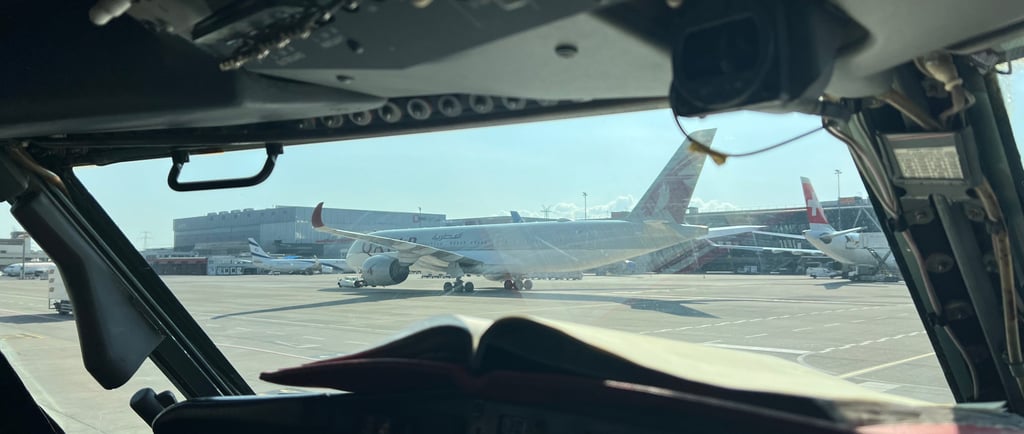Understanding the Critical Phase of Flight: Takeoff Explained
4/17/20252 min read


Why is Takeoff So Critical?
Takeoff is considered the most critical phase of flight for several reasons, including the significant aerodynamic changes that occur and the importance of maintaining control over the aircraft. During this phase, the pilot must ensure the aircraft reaches the correct speeds for a safe departure from the runway, making each aspect of the takeoff process crucial to a successful flight.
We can say it is the most critical phase of the flight because of the small reaction time to determine the situation, for example, a pilot incapacitation may be not perceived until it's too late.
The Concepts of V1, VR, and V2
In aviation, operating speeds are paramount, and the takeoff phase revolves around three significant performance speeds: V1, VR, and V2. Each of these speeds has a distinct role during takeoff, and understanding them is key to ensuring safety.
V1 is the decision speed for the pilot. If an emergency occurs before reaching V1, the pilot is still able to safely abort the takeoff, however, once the aircraft reaches V1, the pilot must continue the takeoff even if issues arise, as stopping could be more hazardous than proceeding. As a summary, V1 is the latest speed at which the first action to reject the takeoff must be done.
VR stands for rotation speed. This is the speed at which the pilot will pull back on the control yoke or stick to lift the aircraft's nose and initiate the first . Achieving the correct rotation speed is essential for allowing the aircraft to gain sufficient lift while maintaining a controlled ascent angle.
V2 is the takeoff safety speed. This speed is crucial once the aircraft is airborne, as it provides the necessary margin for climb performance, especially in the event of an engine failure. During climb out, V2 ensures that the aircraft can maintain a stable rate of climb while giving the pilots the necessary control to manage any potential complications. For example, on the Boeing 737 aircraft, the initial climb on takeoff is done by flying the speed between v2 and v2+15 kts, that is the margin to maintain during climb.
Why Taking Off Requires Precision
The takeoff phase requires precise execution of tasks and adherence to speeds to ensure the safety and effectiveness of the aircraft. Any deviation from the planned speeds—V1, VR, V2—could compromise the takeoff and set the stage for accidents or emergencies. Pilots undergo extensive training to learn how to manage these critical speeds and react to various scenarios that could arise during takeoff.
During takeoff, we have the engines producing a lot of thrust and also low airspeed (having less efectiveness on the controls), meaning the reaction time in case of engine failure is not a lot, so pilots needs to be very fast correcting or the aircraft will veer out of the runway.
Moreover, environmental factors such as wind conditions, runway length, and aircraft weight impact these speeds significantly. Thus, each takeoff is unique, and careful calculation before departure is necessary to mitigate risks.
Ultimately, understanding why takeoff is the most critical phase of flight helps to appreciate the skill required by pilots and the systems in place to ensure safety.
Created by a commercial pilot to share real-world aviation knowledge.
Join the newsletter to stay updated with weekly insights, articles, and exclusive book content.
contact@transitionaltitude.com
© 2025 Transition Altitude. All rights reserved.